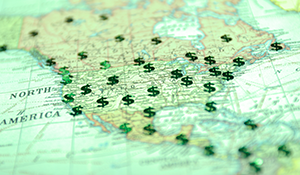 Understanding how our tax system works can be tricky for anyone. Whether you’re an adult who never paid much attention to the taxes being withheld from your paycheck or a kid who just got his or her first job, understanding the basics can help refine and define questions you may have.
Understanding how our tax system works can be tricky for anyone. Whether you’re an adult who never paid much attention to the taxes being withheld from your paycheck or a kid who just got his or her first job, understanding the basics can help refine and define questions you may have.
Many schools don’t teach these tax lessons. This results in many people entering life with a pretty incomplete picture of how taxes work, unless someone else takes the time to explain these tax concepts. Here are some pointers to help you or someone you know navigate our tax maze.
Taxes are mandatory!
While we can have a debate about how much each person should pay, there’s no debating that local, state and federal governments need tax revenue to run the country. These funds are used to build roads, support education, help those who need financial assistance, pay interest on our national debt and defend the country.
There are many types of taxes
When you think of taxes, most think of the income tax, which is a tax on business and personal income you earn from performing a job. But there are also other types of taxes. Here are some of the most common.
- Payroll taxes. While income taxes can be used to pay for pretty much anything the government needs money for, payroll taxes are earmarked to pay for Social Security and Medicare benefits.
- Property taxes. These are taxes levied on property you own. The most common example of this is the property tax on a home or vacation property.
- Sales tax. These are taxes placed on goods and services you purchase. While most of this tax is applied at the state and local levels, there are also federal sales taxes on items like gasoline.
- Capital gains taxes. If you sell an investment or an asset for a profit, you may owe capital gains taxes. The most common example of this is when you sell stock for a gain. Capital gains taxes could also come into play with other assets, such as a rental property you sell for a profit.
- Estate taxes. This tax is applied to assets in your estate after you pass away.
Not all income is subject to tax
Most, but not all, of your income is subject to tax.
- While your paycheck is subject to tax, interest earned from certain municipal bonds is not. And the government often excludes things like benefits from the tax man.
- Capital gains taxes have exclusions for gains on the sale of your home and donated stock.
- Estate taxes have an exclusion, so only estates in excess of the exclusion are taxed.
This is why having someone in the know can be really helpful in navigating these rules.
The progressive nature of income tax
When it comes to income taxes, the government gets to take the first bite. The question is how BIG of a bite the government gets to take.
For example, if you only have one chocolate chip cookie, the government’s bite is really, really small. If you have 1,000 chocolate chip cookies, the government takes a small bite from the first 100 cookies, a larger bite from the next 100 cookies, and an even larger bite from the remaining 800 cookies.
This is called a progressive tax rate system. For example, if you’re considered single for tax purposes in 2021, the first $9,950 of taxable money you earn gets taxed at 10%. The next $30,575 you earn gets taxed at 12%. The next $45,850 gets taxed at 22%. Money you earn above this point will get taxed at either 24%, 32%, 35% or 37%.
Understanding the progressive nature of our tax system is a key concept in managing the size of the bite the government takes. That is why tax planning is so important!
Deductions can decrease the government’s tax bite
The progressive tax system is complex because it is manipulated in a big way by our elected officials. This is typically done through credits, deductions and phaseouts of tax benefits.
For example, there is a fairly complex deduction for families with children, and the earned income tax credit is an added tax cut for those in the lower end of the progressive income tax base. There are also credits and deductions for businesses, homeowners, education and many more types of taxpayers.
As you can imagine, the U.S. tax system is very complex with many nuances. Please seek help if you have further questions or are facing a complicated taxable transaction.



 With the increased popularity of working-at-home, you may consider moving to one of the nine states that don’t impose an individual income tax. Before doing so, you should understand how each of these states raises its revenue. And then consider how you can reduce your tax obligation in your current home state.
With the increased popularity of working-at-home, you may consider moving to one of the nine states that don’t impose an individual income tax. Before doing so, you should understand how each of these states raises its revenue. And then consider how you can reduce your tax obligation in your current home state. Understanding how our tax system works can be tricky for anyone. Whether you’re an adult who never paid much attention to the taxes being withheld from your paycheck or a kid who just got his or her first job, understanding the basics can help refine and define questions you may have.
Understanding how our tax system works can be tricky for anyone. Whether you’re an adult who never paid much attention to the taxes being withheld from your paycheck or a kid who just got his or her first job, understanding the basics can help refine and define questions you may have.